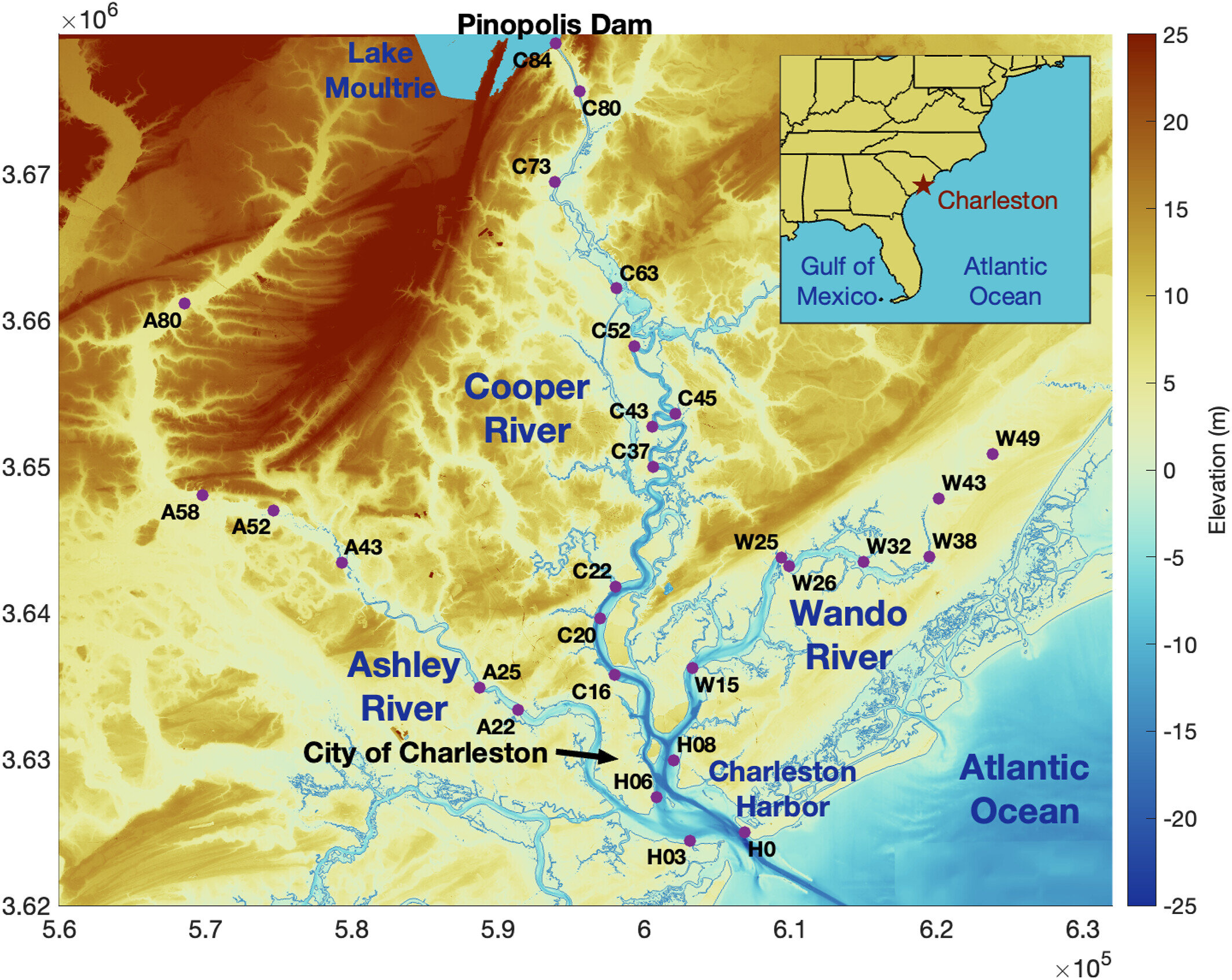
The common practice of building dams to prevent flooding can actually contribute to more intense coastal flood events, according to a new study.
The study, published in the Journal of Geophysical Research: Oceans, studied the effects of dams built in coastal estuaries, where rivers and ocean tides interact. Those massive infrastructure projects are surging in popularity globally, in part to help offset intensifying storms, salt intrusion and sea-level rise fueled by climate change.
By analyzing data and measurements from Charleston Harbor, South Carolina, dating back more than a century, researchers determined that coastal dams don’t necessarily mitigate flooding. Dams can either increase or decrease flood risks, depending on the duration of a surge event and friction from the flow of water.
“We usually think about storm surges becoming smaller as you go inland, but the shape of the basin can actually cause it to become larger,” said lead author Steven Dykstra, an assistant professor at the University of Alaska Fairbanks College of Fisheries and Ocean Sciences.
Estuaries are typically shaped like a funnel, narrowing as they go inland. Introducing a dam shortens the estuary with an artificial wall that reflects storm surge waves moving inland. The narrowing channel shape also makes small reflections that change with the surge duration. Dykstra compared those storm-fueled waves to splashes in a bathtub, with certain wave frequencies causing water to slosh over the sides.
After using Charleston Harbor as a case study, researchers used computer modeling to gauge the flood response at 23 other estuaries in diverse geographic areas. Those encompassed both dammed and naturally occurring estuary systems, including Cook Inlet in Alaska.
The models confirmed that the basin shape and alterations that shorten it with a dam are the key component in determining how storm surges and tides move inland. At the right amplitude and duration, waves in dammed environments grow instead of diminishing.
The study also determined that areas far from coastal dams could still be directly influenced by human-created infrastructure. In the Charleston area, the highest storm surges routinely occurred more than 50 miles inland.
“One of the scary things with this is that sometimes people don’t realize they are in a coastal-influenced zone,” Dykstra said. “Sea-level rise is making people far inland aware that they’re not free from coastal effects—and it usually happens with a massive flood.”
Other contributors to the study included Enrica Viparelli, Alexander Yankovsky and Raymond Torres from the University of South Carolina, and Stefan Talke from California Polytechnic State University, San Luis Obispo.
More information:
Steven L. Dykstra et al, Reflection of Storm Surge and Tides in Convergent Estuaries With Dams, the Case of Charleston, USA, Journal of Geophysical Research: Oceans (2024). DOI: 10.1029/2023JC020498
Citation:
Dams built to prevent coastal flooding can worsen it (2024, September 12)
retrieved 12 September 2024
from https://phys.org/news/2024-09-built-coastal-worsen.html
This document is subject to copyright. Apart from any fair dealing for the purpose of private study or research, no
part may be reproduced without the written permission. The content is provided for information purposes only.







